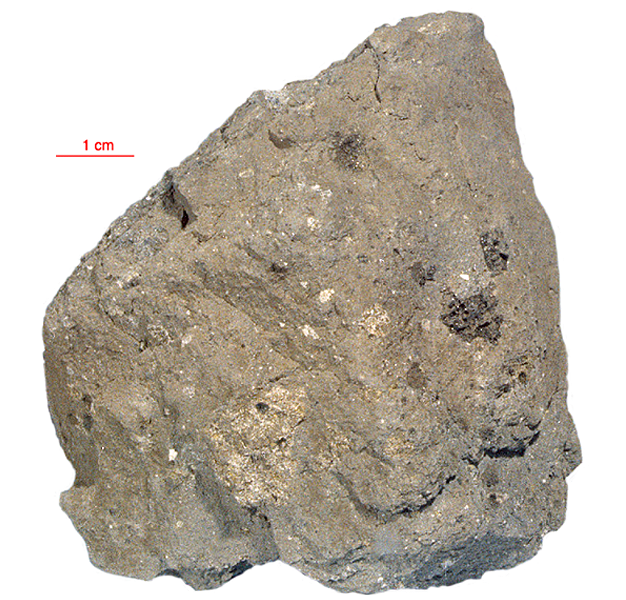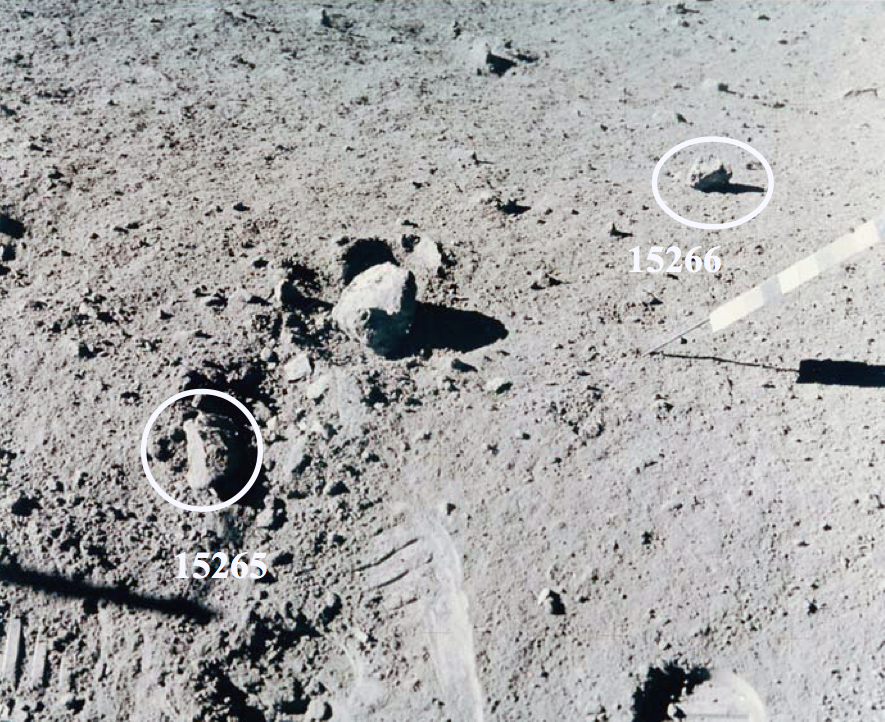
Fact sheet
15265 and 15266 are similar-looking breccia samples which were returned in the same bag and are from the same small boulder, broken by the astronauts. They are coherent regolith breccias with dark glassy matrix and contain mare basalt and KREEP basalt clasts as well as abundant glass (brown, mustard yellow and pale green - beads and irregular fragments) and agglutinate fragments. Crystals of olivine, pyroxene (most common), plagioclase and opaque minerals (troilite, ilmenite and metallic iron) are also present.
The sample weighed 271.4 grams before analysis and has not been dated.
Further details of this and other Apollo samples are here: http://curator.jsc.nasa.gov/lunar/
The Apollo 15 landing site was in the Apennine Highlands, and close to Hadley Rille — a long, narrow winding valley. Approximately 76 kg of lunar material, including soil, rock, core-tube and deep-core samples, were returned to Earth.
This mission was the first flight of the Lunar Roving Vehicle which allowed the astronauts to venture further from the Lunar Module than in previous missions. During three periods of extravehicular activity, or EVA, on July 31st, and August 1st and 2nd, Scott and Irwin completed a record 18 hours, 37 minutes of exploration, travelling 17.5 miles, in the first car that humans had ever driven on the Moon.
Apollo 15 was launched on 26 July 1971.







